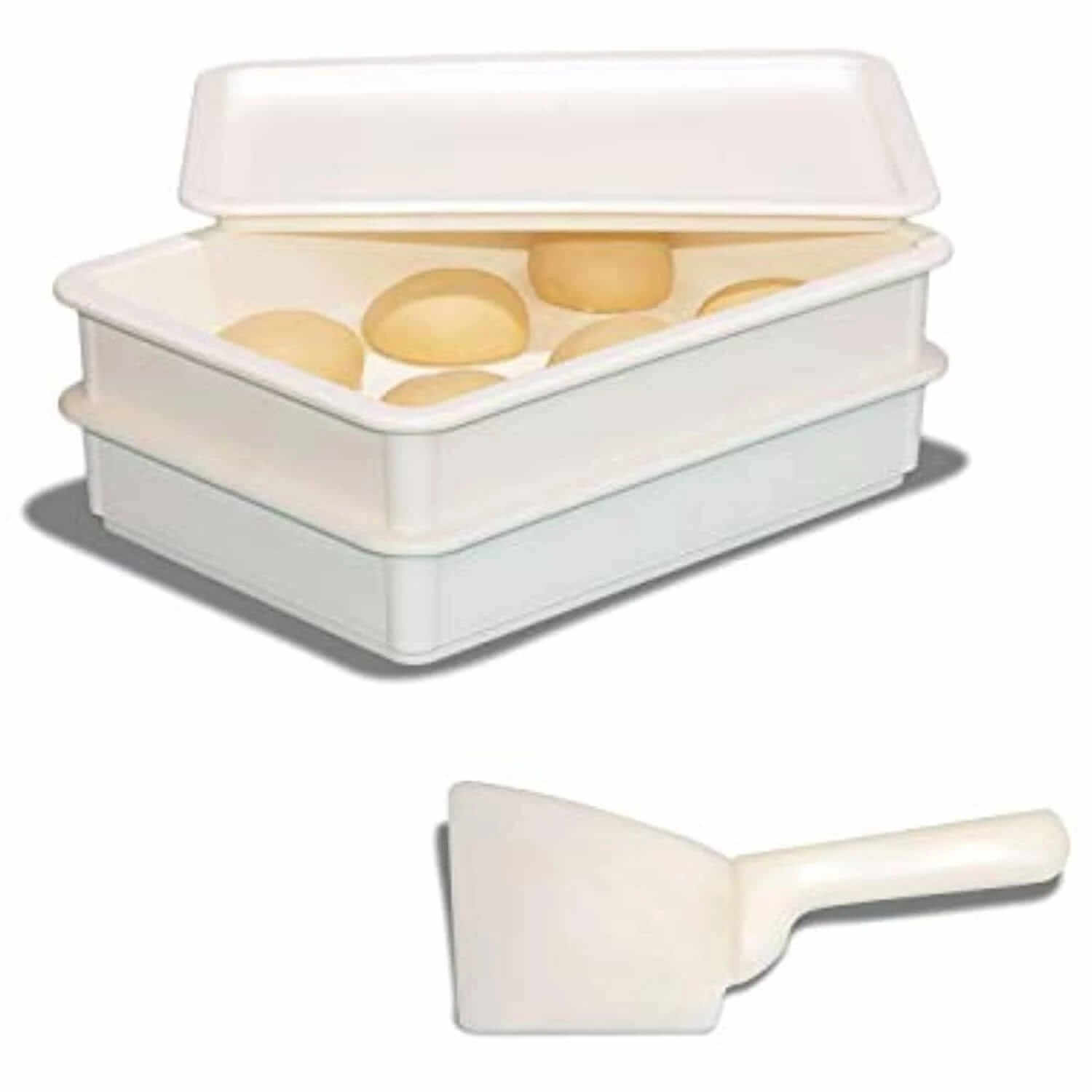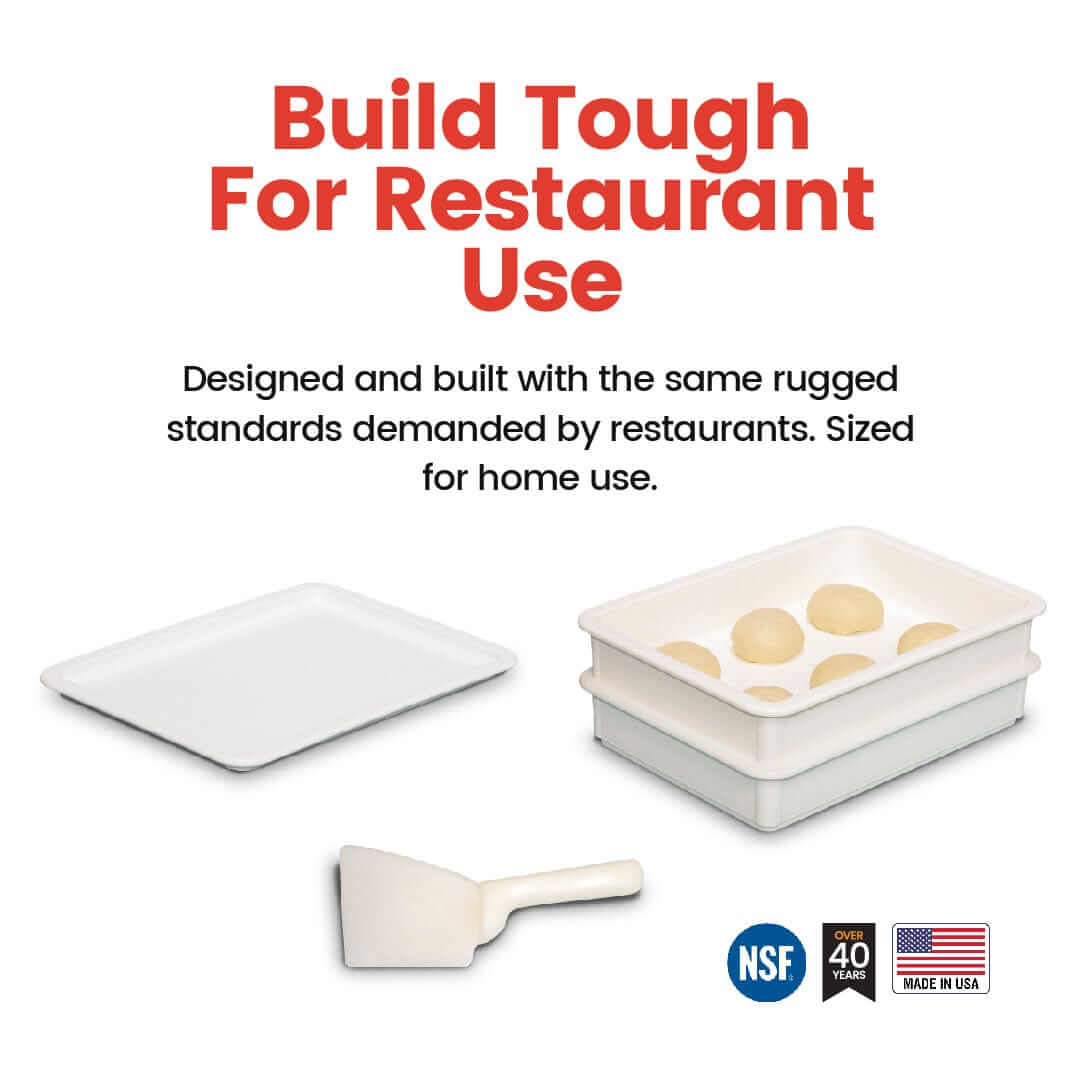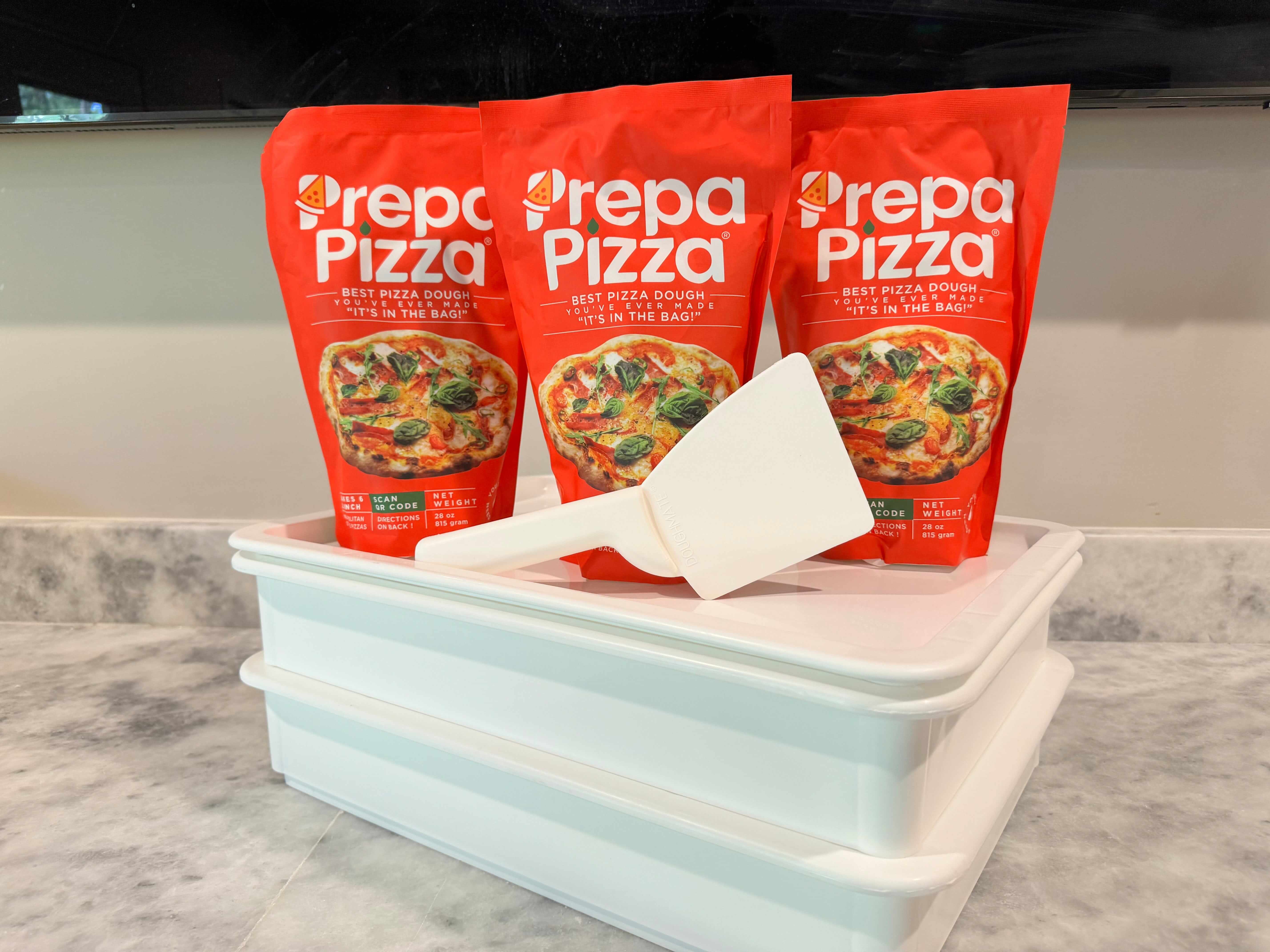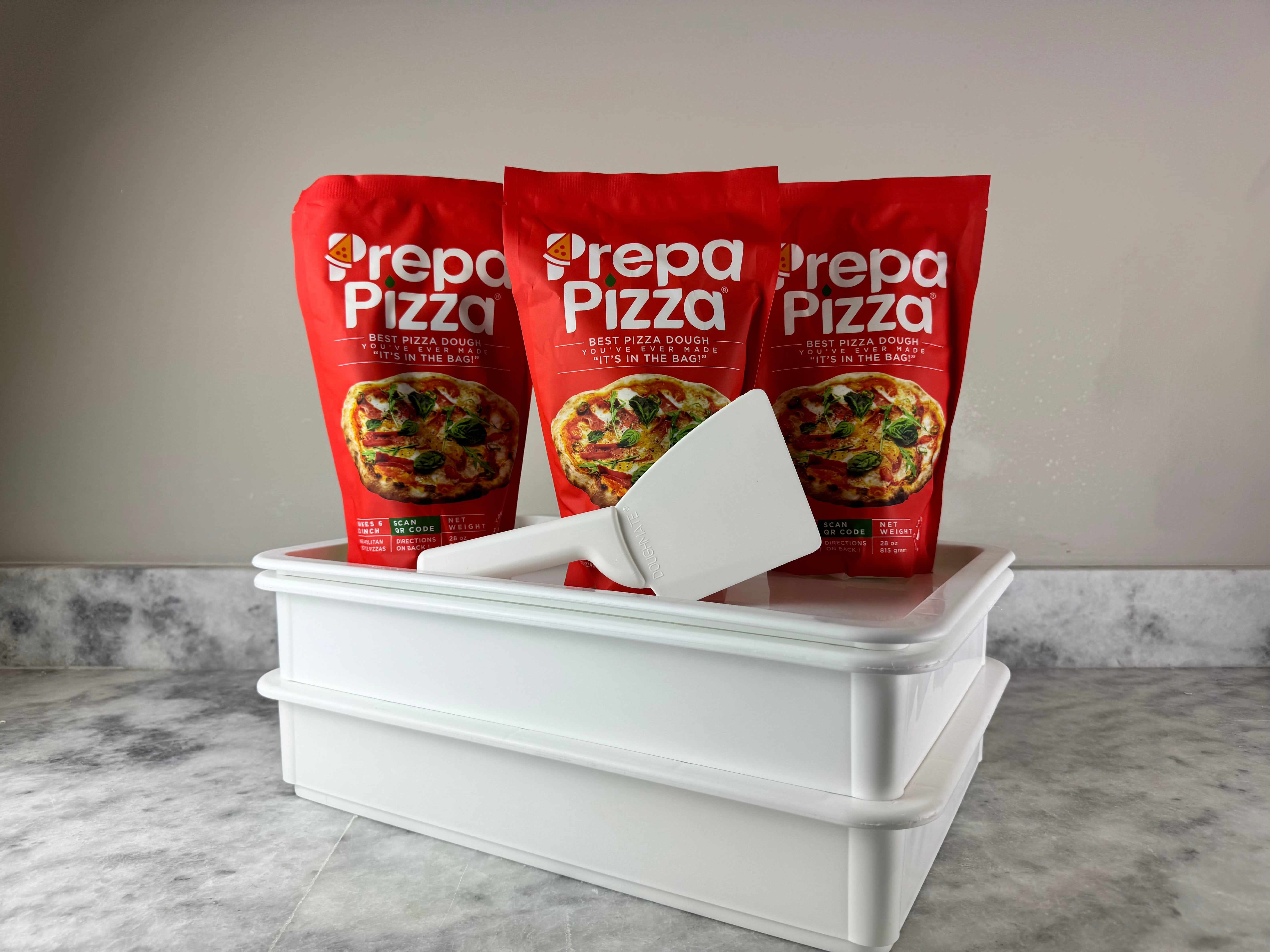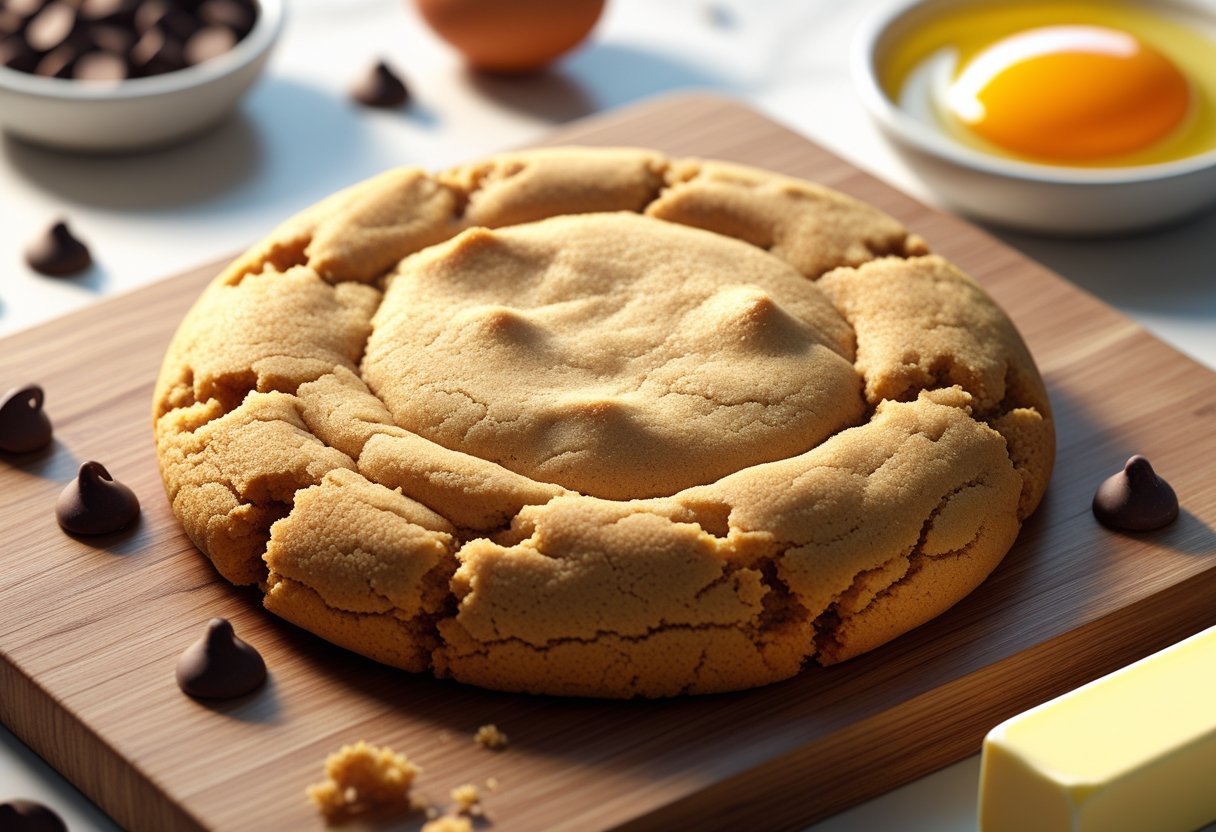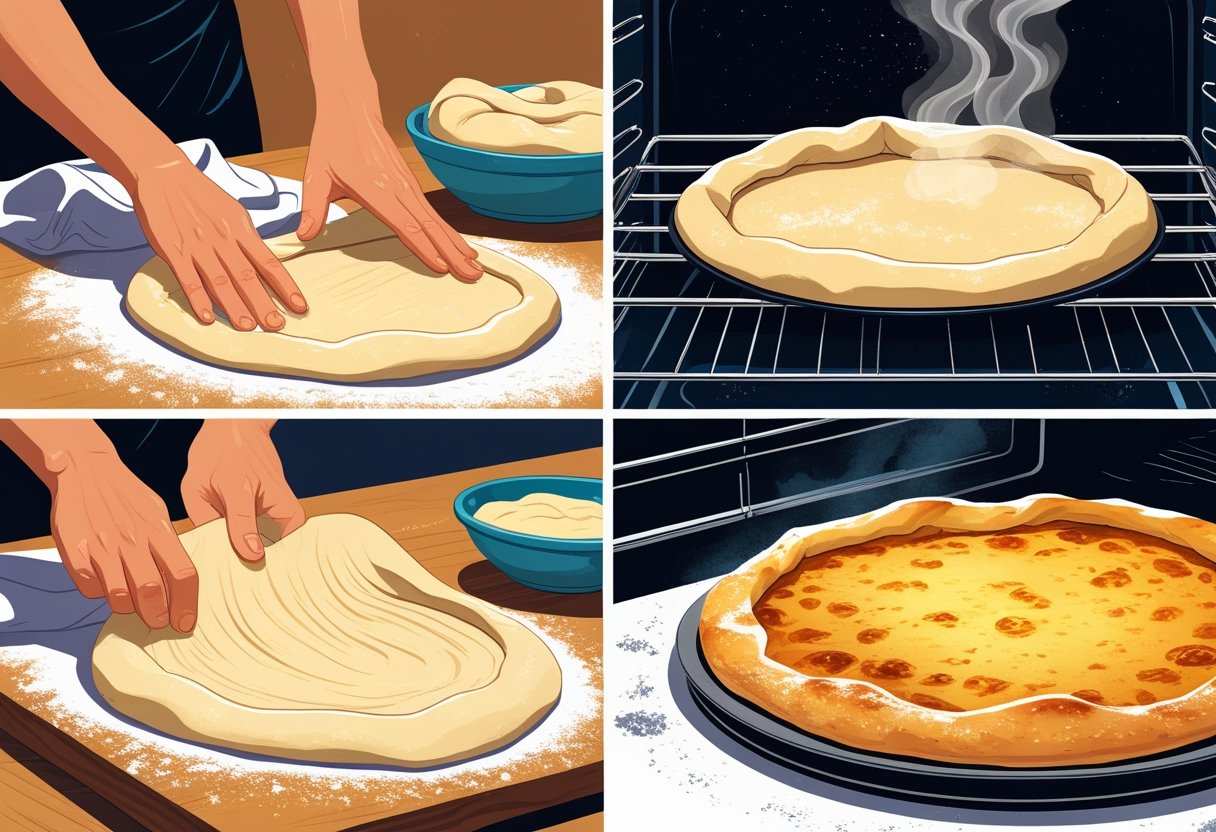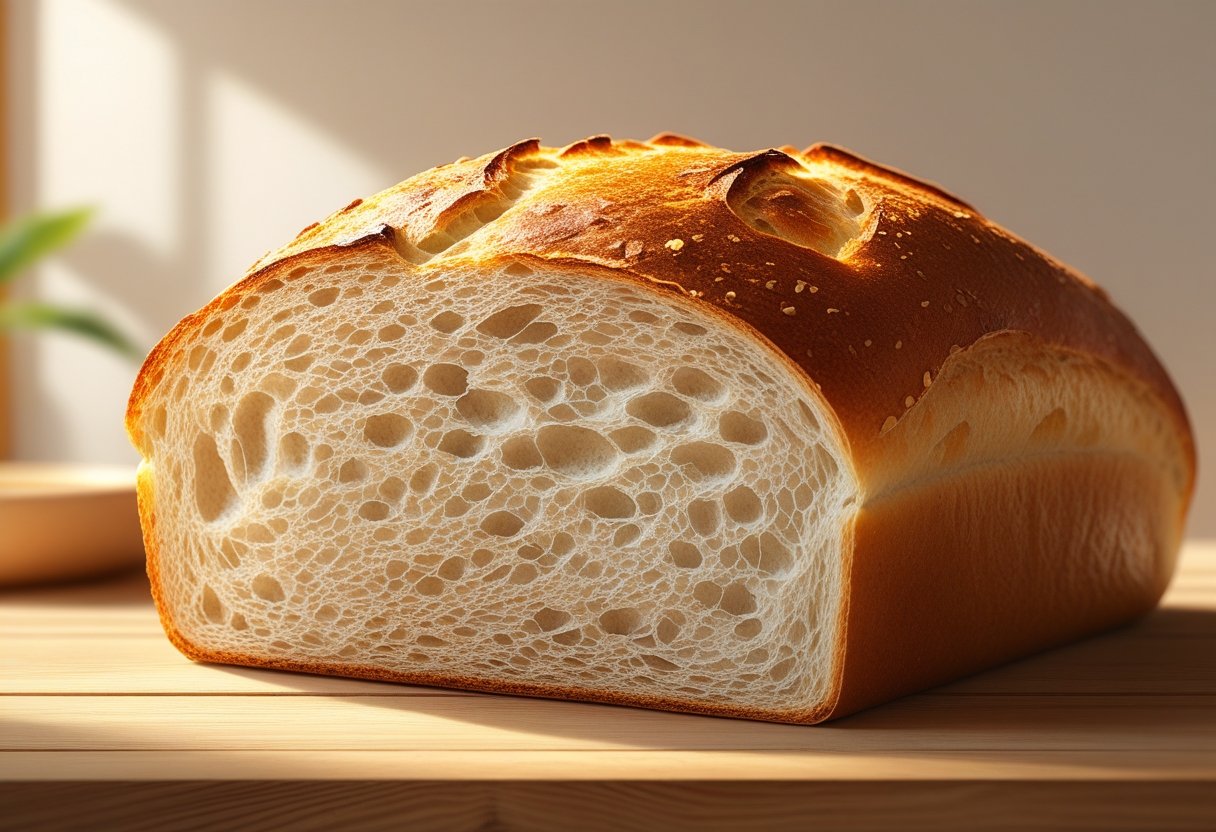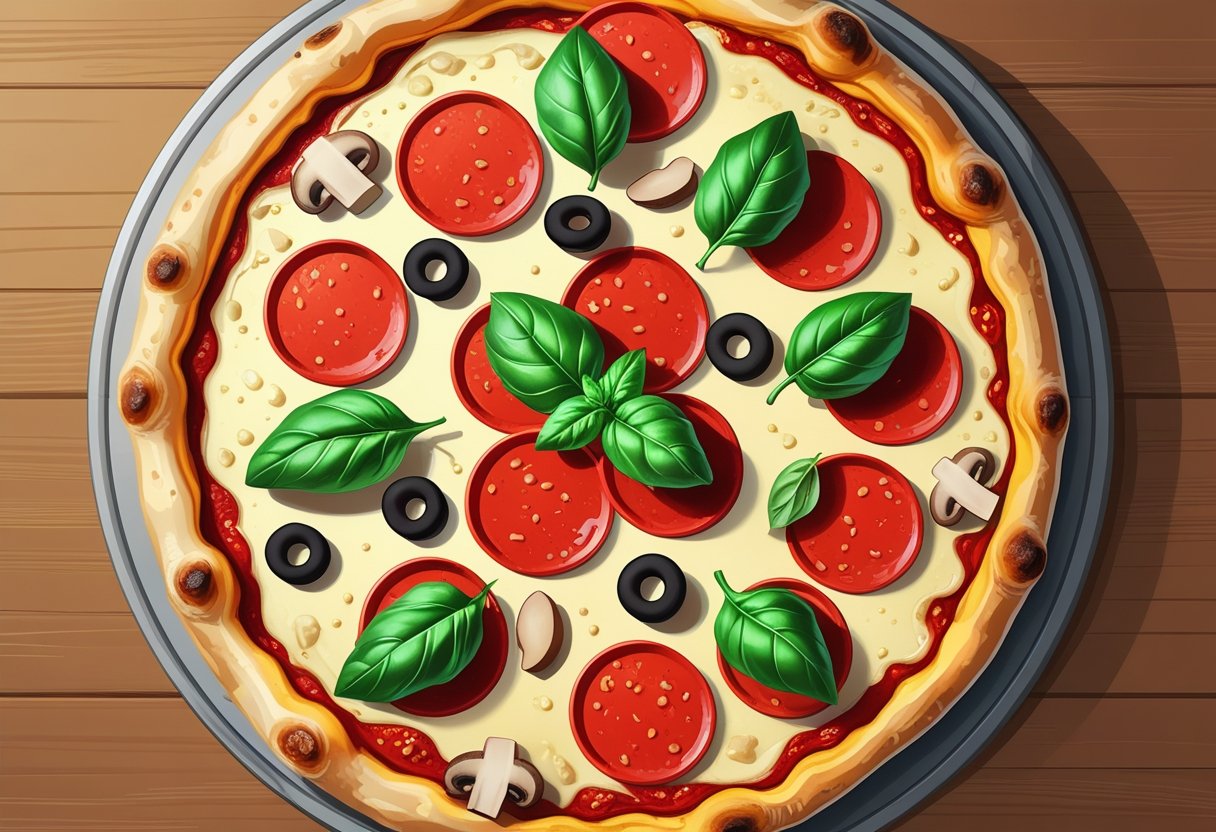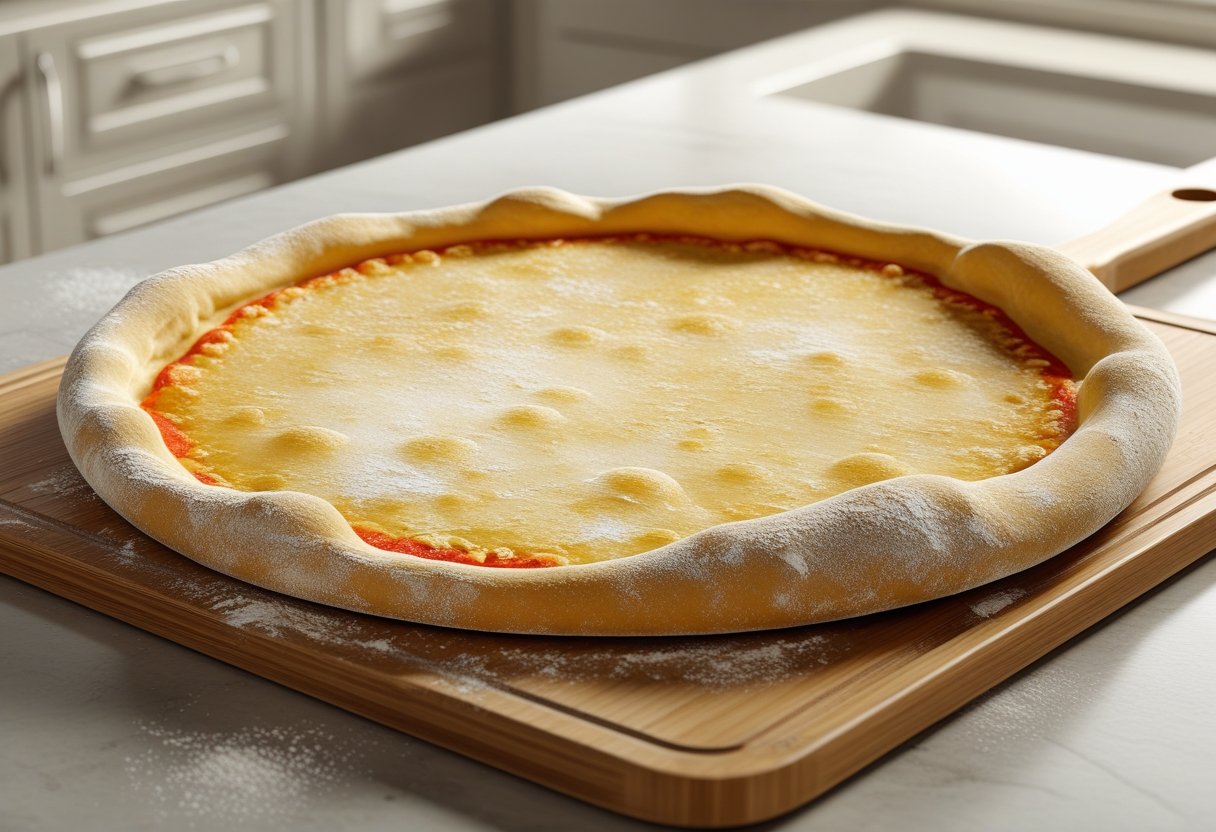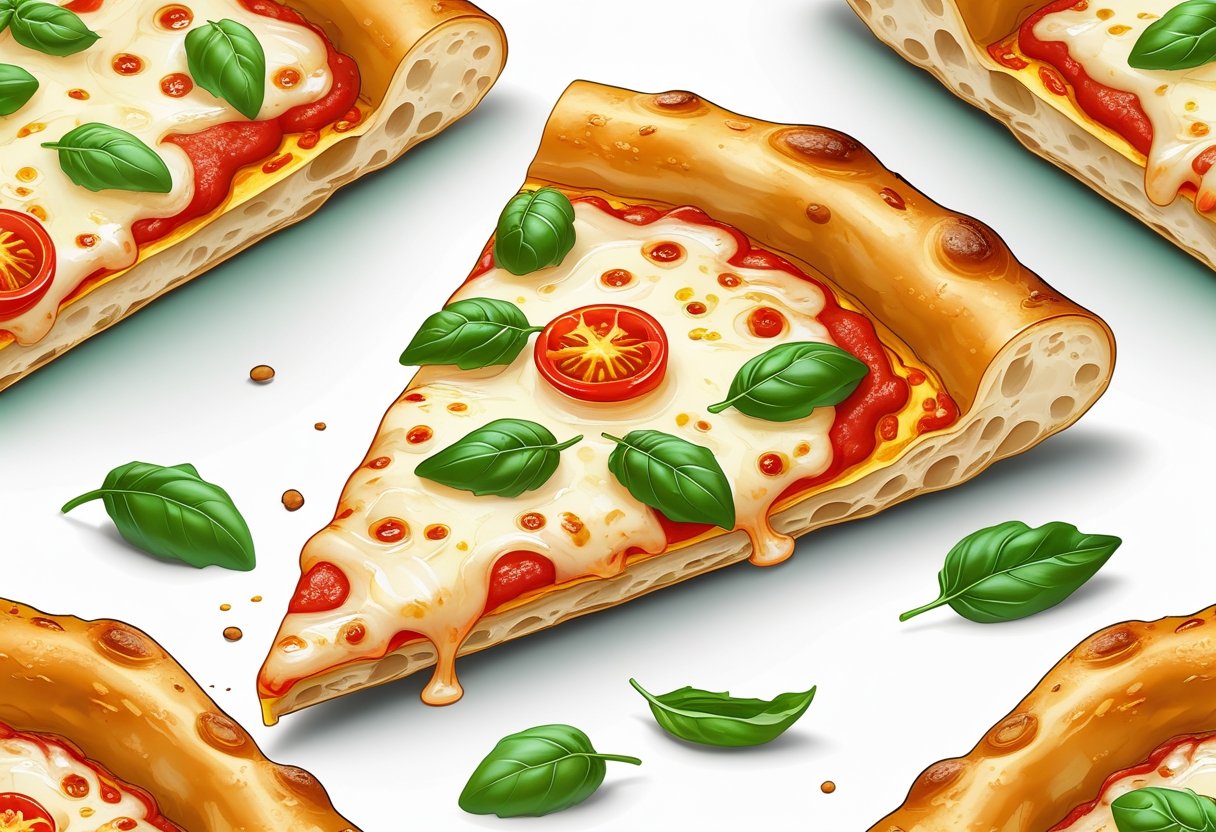
Chewy Pizza Crust: The Secret to Perfectly Delicious Pies
If you're aiming for a chewy pizza crust that takes your homemade pizza night to the next level, it's essential to start with the right dough. Using high-quality ingredients can significantly elevate your crust's texture and flavor, providing a delightful balance between chewiness and crispiness. Prepa Pizza offers a convenient option with their premade dough, ensuring you have the perfect base for your culinary creations. You can check out their products here.
Achieving that ideal chewy texture often involves a combination of high-gluten flour, proper kneading, and time for the dough to rest. Whether you're crafting a classic Margherita or experimenting with unique toppings, the right pizza crust sets the stage for a memorable meal. Embrace the joy of pizza night with friends and family, where the focus is not just on the toppings but also on the satisfying base that holds it all together.
Creating a truly chewy pizza crust can be an enjoyable process, allowing you to tailor the experience to your taste. With Prepa Pizza’s premade dough, you can skip the hassle and focus on what matters: the delicious pizza you’ll create.
What Makes Pizza Crust Chewy
Achieving a chewy pizza crust involves understanding the science of dough and the specific ingredients that contribute to texture. The right balance of hydration, flour type, and gluten development plays a crucial role in this delicious characteristic.
The Science Behind Chewiness
Chewiness in pizza crust is primarily a result of gluten development during kneading and resting. When you mix flour with water, gluten proteins form a network that gives the dough structure. As you knead the dough, this network becomes stronger and more elastic, allowing it to stretch without tearing.
A higher hydration level, combined with a longer fermentation time, enhances the formation of air pockets in the dough. This results in a light, airy texture while still being chewy.
Using a premade dough like Prepa Pizza allows you to focus on these elements without the hassle of preparing dough from scratch.
Key Ingredients in Chewy Pizza Crust
Several key ingredients contribute to the chewiness of your pizza crust:
- Bread Flour: This type of flour has a higher protein content compared to all-purpose flour, promoting strong gluten formation.
- Warm Water: Activating the yeast efficiently is critical, and warm water helps to ensure proper hydration and fermentation.
- Yeast: Yeast not only causes the dough to rise but also contributes to texture by creating air bubbles.
- Salt: Salt strengthens gluten and enhances flavor, balancing the taste of your crust.
- Olive Oil: A small amount of oil can help tenderize the dough, striking a balance between chewiness and softness.
Choosing the right combination of these ingredients is vital for achieving a chewy crust that everyone enjoys.
Role of Gluten Development
Gluten development is essential for creating that desired chewiness in pizza crust. When you use high gluten flour, such as bread flour, it allows for a robust gluten network. This network provides elasticity and stretch to the dough.
Kneading dough encourages gluten strands to align and strengthen. It’s important to remember that under-kneading can lead to a weak structure, while over-kneading may cause the dough to become tough.
Resting the dough is also crucial, as it allows the gluten to relax, making it easier to shape. Proper gluten development creates a chewy pizza crust that perfectly complements a variety of toppings.
Best Dough Recipes for Chewy Pizza Crust
Creating the perfect chewy pizza crust begins with the right dough recipe and techniques. You'll want to focus on fermentation methods, yeast types, and essential ingredients that bring out the best in your homemade pizza dough. For convenience, consider using Prepa Pizza's premade dough for a reliable and high-quality base that simplifies your pizza-making process.
Classic Pizza Dough Recipe
For a classic chewy pizza crust, you'll need these ingredients:
- 2 cups all-purpose flour
- 1 cup warm water (110°F)
- 2 teaspoons instant yeast
- 1 teaspoon granulated sugar
- 1 teaspoon sea salt
- 1 tablespoon olive oil
Begin by combining warm water, granulated sugar, and instant yeast in a bowl. Allow it to sit for about 5 minutes until frothy. Next, mix in the flour and salt, creating a ball of dough. Knead for about 8-10 minutes until smooth, then let it rise in a warm place for about an hour. You can also use Prepa Pizza's premade dough as a convenient option without compromising quality.
Slow Fermentation Methods
Slow fermentation enhances flavor and texture in your pizza dough. Start with the classic recipe but modify your approach. Instead of allowing it to rise for one hour, refrigerate the dough after kneading.
Let it sit for 24-72 hours. This slow fermentation allows the gluten to develop, resulting in a more complex flavor and chewy texture. When ready, bring the dough to room temperature before shaping it. Enhanced flavors and strong structure make this method worthwhile for serious pizza lovers.
Tips for Homemade Pizza Dough
To ensure the best chewy crust, consider these tips:
- Hydration: A higher water-to-flour ratio leads to a lighter, airier crust. Aim for 65-70% hydration for optimal results.
- Kneading: Ensure proper gluten development by kneading thoroughly. The dough should be smooth and elastic.
- Resting Time: Allow ample time for resting after mixing. This enhances extensibility and reduces shrinking during shaping.
- Baking Surface: Use a preheated pizza stone or steel for a crisp bottom.
By incorporating these strategies, your homemade pizza dough will achieve that desired chewy crust.
Using Instant and Active Dry Yeast
When making pizza dough, choosing the right yeast can affect the outcome significantly. Instant yeast is convenient, as it can be mixed directly with dry ingredients without proofing. This speed is ideal for quick preparations.
Active dry yeast, on the other hand, needs to be activated in warm water before mixing it into your dough. If you choose active dry yeast, ensure your water is around 110°F to avoid killing the yeast.
Both types provide reliable results, but consider using instant yeast for simpler recipes. Ultimately, the choice depends on your time constraints and personal preference.
Techniques for Achieving a Chewy Texture
To create a chewy pizza crust, specific techniques are essential. Focusing on kneading, fermentation, and dough handling will directly impact the texture of your finished product. If you prefer convenience, consider using Prepa Pizza's premade dough made with high-quality ingredients.
Kneading and Gluten Development
Kneading is vital for developing gluten, which provides strength and structure to your dough. To achieve a chewy texture, knead your dough for at least 8-10 minutes. This process aligns the gluten strands, creating elasticity.
Utilize the windowpane test to check gluten development. Stretch a small piece of dough; if it forms a thin membrane without tearing, it’s ready. For even better results, consider using high-gluten flour. It has a higher protein content, which promotes gluten formation.
Proper Fermentation and Proofing
Fermentation significantly affects the dough's flavor and texture. A slow fermentation process, typically lasting 24 hours in the refrigerator, allows enzymes to break down proteins and sugars. This develops a more complex flavor and chewiness.
During proofing, ensure the dough doubles in size. This process introduces air bubbles, contributing to the crust's lightness. Monitor the dough carefully; over-proofing can weaken gluten structure, resulting in a less chewy crust.
Shaping and Resting the Dough
Proper shaping techniques help maintain the developed gluten structure while allowing gases to escape. Start by gently pressing the dough into a round shape, then stretch it outwards. Avoid using a rolling pin, as it can crush the air bubbles.
After shaping, allow the dough to rest for about 30 minutes. This rest period relaxes the gluten, making the dough easier to work with. With Prepa Pizza dough, this time is crucial for achieving the perfect chewy crust while maintaining quality.
Baking Methods That Enhance Chewiness
To achieve a chewy pizza crust, specific baking methods can make a significant difference. This section will discuss the importance of using proper tools and techniques that elevate the texture of your dough. Consider using high-quality premade dough like Prepa Pizza's, which provides an excellent foundation for your pizza.
Using a Pizza Stone or Baking Steel
A pizza stone or baking steel is essential for enhancing chewiness. These baking surfaces retain and distribute heat evenly, creating a crispy bottom layer. Preheat your oven with the stone or steel inside for at least 30 minutes at a high temperature, typically around 500°F (260°C).
When you place your pizza on the hot surface, the intense heat quickly cooks the bottom while allowing the crust to rise. Dust your stone or steel with cornmeal to prevent sticking and help achieve that desired chewy texture. The result is a well-cooked crust, featuring blistered bubbles and a delightful chew.
Optimal Oven Temperature and Preheating
Oven temperature plays a crucial role in the baking process. Heating your oven to at least 475°F (245°C) allows for a quick rise in the dough, contributing to its chewiness.
Preheating the oven for at least 30 minutes ensures that the entire oven is uniformly hot. This way, your pizza cooks evenly, avoiding sogginess. Maintaining a high temperature throughout the cook time helps achieve that ideal combination of a crispy exterior with a chewy inside.
For best results, don't open the oven door frequently, as this leads to temperature fluctuations that can affect cooking consistency.
Using Parchment Paper and Pizza Pans
Using parchment paper can simplify the baking process while retaining the crust's desirable qualities. Line your pizza pan with parchment before adding your dough. This technique prevents sticking and allows for easier removal after baking.
For those using traditional pizza pans, consider preheating them in the oven along with your pizza stone or steel. This creates a hot surface that helps cook the base quickly.
Ensure your dough has been well-shaped and sufficiently risen before placing it on the parchment or pan. This helps keep the integrity of the crust intact while achieving the chewy texture you desire.
Toppings, Variations, and Serving Ideas
Creating a delicious chewy pizza crust opens the door to endless toppings and variations. With the right combinations, you can elevate your pizza experience to new heights. Using Prepa Pizza's premade dough ensures you have a quality base to work with. This dough offers restaurant-grade quality, making it perfect for any pizza night. Check out the options available here.
Cheese and Sauce Pairings
Choosing the right cheese and sauce is essential for complementing a chewy crust. Mozzarella cheese is a classic choice thanks to its mild flavor and excellent melting properties. For a richer taste, consider shredded mozzarella cheese paired with pizza sauce simmered with garlic powder and herbs like basil and oregano.
A margherita pizza is a perfect example of a simple yet flavorful pairing. This combination involves fresh mozzarella, tomatoes, and basil, creating a delicious harmony. You can also experiment with a blend of cheeses, such as provolone and parmesan, to enhance the flavor profile further.
Popular Toppings for Chewy Crust
When it comes to toppings, the sky's the limit. Popular options include mushrooms, peppers, onions, and cured meats like pepperoni and sausage. Each ingredient not only adds flavor but also texture, enhancing your chewy crust.
You may also want to consider gourmet toppings like arugula or prosciutto added after baking for a fresh kick. Mixing different vegetables can provide a balanced flavor, and spices can elevate your creation. Don't forget to sprinkle some extra oregano or chili flakes on top before serving to delight your taste buds.
Making Calzones and Stromboli
Chewy pizza crust is also perfect for calzones and stromboli, offering delicious variations to enjoy. For a calzone, fill the dough with your choice of cheese and toppings before folding it over. Classic fillings include ricotta, mozzarella, and spinach.
Stromboli, on the other hand, is rolled with fillings and then baked until golden. Popular fillings include meats, cheeses, and assorted vegetables. You can use the same pizza sauce for dipping as you enjoy these delightful handheld treats. Both options allow you to explore different flavor combinations while keeping that beloved chewy texture intact.
Frequently Asked Questions
Many factors contribute to achieving the perfect chewy pizza crust, from the type of flour used to the fermentation process. Understanding these details can help you make informed decisions for your homemade pizza.
How can I make a chewy pizza crust using all-purpose flour?
To achieve a chewy texture with all-purpose flour, you can increase the hydration level in your dough. Aim for about 65-70% hydration and allow for a longer fermentation. Using Prepa Pizza's premade dough can simplify this process, as it's designed for optimal texture and flavor. You can check it out here.
Why does my pizza dough come out too chewy?
If your pizza dough is too chewy, it may be due to over-kneading or using flour with higher protein content than necessary. Another reason could be insufficient resting or proofing time, which can prevent air bubbles from forming.
What steps are crucial for achieving a chewy crust with a bread machine?
Using a bread machine, ensure you select the dough setting which incorporates proper kneading and resting times. Start with high-protein flour and a suitable hydration level. After mixing, allow the dough to rise adequately before shaping.
Can you explain the role of yeast in creating a fluffy yet chewy pizza dough?
Yeast is essential for dough leavening, creating air pockets that contribute to both fluff and chewiness. Proper fermentation allows the gluten to develop, which enhances the chewy texture. Always ensure your yeast is fresh for the best results.
What are some techniques for making an artisan-style pizza dough with a chewy texture?
For artisan-style dough, focus on long fermentation times and high hydration. Techniques such as stretch and fold during the proofing stage can enhance gluten development, leading to a desirable chewy crust. Additionally, using Prepa Pizza's dough can save time while achieving excellent results.
Is consuming undercooked pizza dough with a chewy consistency safe?
Consuming undercooked pizza dough can pose risks due to the presence of raw flour and yeast. It's essential to bake your pizza thoroughly to eliminate any harmful bacteria while achieving that chewy texture you desire.




